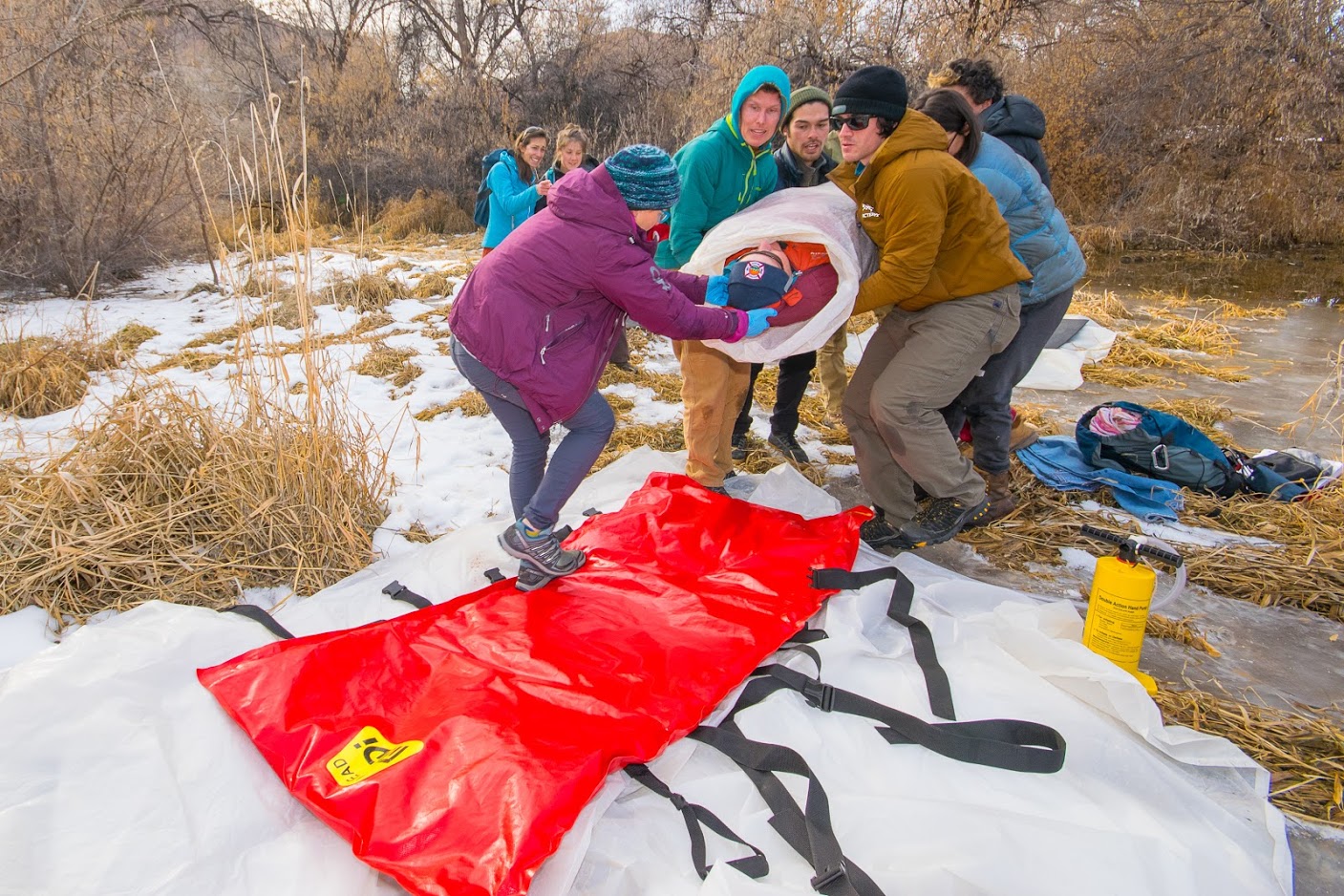A Wyoming-based company called Wildland Adventures has begun its first season of the Wilderness Adventures Leadership Institute (WALI), a 42 day course for future outdoor youth guides and leaders. Students from all over the country arrived at the Salt Lake City airport on June 1, and they will start the program by rafting through Desolation and Gray canyons to Moab. From there, the course includes two certifications.
“Throughout the course they do backcountry rafting trips, a backcountry backpacking trip, they do the WFR [Wilderness First Responder] course, they do a swiftwater rescue course,” said Gabe Allen, the Rocky Mountain regional director for the company. “Half of it’s down there in the Moab area, and the other half is up here near us in Jackson, Wyoming.”
The outdoor industry is a growing part of the economy nationwide, and especially in the Mountain West. Environmental advocacy groups frequently cite the economic value of recreation on public lands as a way to persuade policy makers in favor of their cause, along with arguments extolling the values of biodiversity and environmental health. The Utah Governor’s Office of Economic Development has an office devoted to outdoor recreation. On its website, the office references data from a study from the Outdoor Industry Association, a member-driven trade organization, which says the outdoor recreation economy generates 110,000 jobs in Utah, $12.3 billion in consumer spending and $737 million in state and local tax revenue.
Some have questioned whether economic worth is the right way to gauge the value of outdoor recreation.
Hansi Johnson is the director of recreational lands at the Minnesota Lands Trust. He published an article in the Adventure Journal magazine about what he called the “bro-ification” of outdoor recreation.
Promoting exotic destinations and expensive, high-tech clothing and equipment excludes all but the wealthy and elite from something that should be accessible to everybody as a simple way to enjoy life and have fun, he argued.
“The public images of the outdoor enthusiast, our playgrounds, and our experiences are those [of] the entitled and elite,” Johnson wrote. “And that sense that outdoor adventure belongs to the wealthy and well-connected is pushing aside the common participant.”
However, that promotion is indeed bringing more participants and more money to the outdoor recreation industry.
Young people are interested in the outdoor industry’s jobs, and colleges, universities and other educational organizations are offering certifications and courses to train students in guiding, teaching outdoor skills and ethics, emergency medicine and rescue skills.
Moab’s own economy is in large part supported by the outdoor industry, and Moab hosts its share of outdoor recreation educational programs, including courses in wilderness medicine and complex rescues for the National Park Service, Grand County Search and Rescue, Outward Bound and the National Outdoor Leadership School.
After the WALI students complete their river expedition, they will go to the classroom for an 80-hour Wilderness First Responder course.
The certification is considered an industry standard, and will teach the students how to address remote medical emergencies when calling 911 is not an option. The course will be taught at the Old Spanish Trail Arena from June 9 through 14.
“It’s a course that’s within a course,” Allen said.
The program is described in detail in a webinar on the company’s website.
Program expert Shannon Jones narrates the slideshow.
“WALI provides you, who we assume to be a proven outdoor enthusiast, a chance to build upon your outdoor skill set,” she says.
She describes the certifications and activities in the course, but also emphasizes the “soft skills” the program seeks to impart, such as group management, emotional support and gaining youths’ trust.
“Becoming a leader, it’s necessary to really hone in on those soft skills,” Jones says in the slideshow.
Wilderness Adventures is working toward getting accreditation for the course through the University of Wyoming, so students could put their training toward college credit in an outdoor education degree.
In the promotional slideshow, Jones summarizes the program this way: “You’re expanding upon your knowledge, you’re building up your hard skills and your soft skills, you’re providing service work for the National Forest Service, and you’re transitioning, as a whole, from being a student to becoming a leader while working with youth in the field. And you’re doing so while exploring Wyoming and Utah … it’s awesome and it’s super, super fun.”
Moab attracts outdoor education programs
When: Training schedules and trips vary
Where: Moab and surrounding region
Cost: Fees vary
Info: Visit www.cobs.org for more info
When: Training schedules and trips vary
Where: Moab
Cost: Fees vary
Info: Visit www.nols.edu for more info
When: Training schedules and trips vary
Where: Wyoming and Utah with training based in Moab
Cost: Varies
Info: Visit www.wildernessadventures.com for more info
“You’re doing so while exploring Wyoming and Utah… it’s awesome and it’s super, super fun.”




